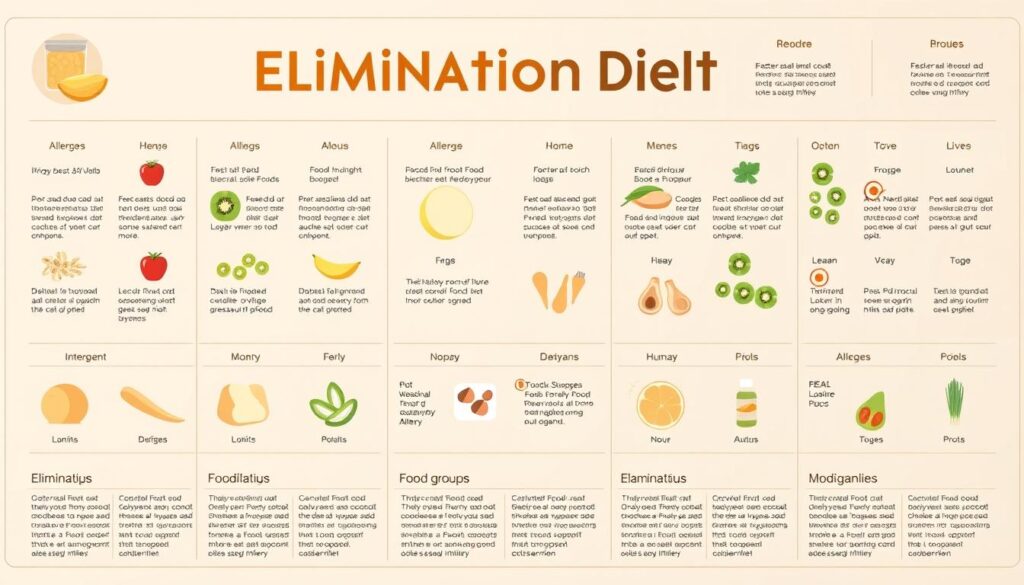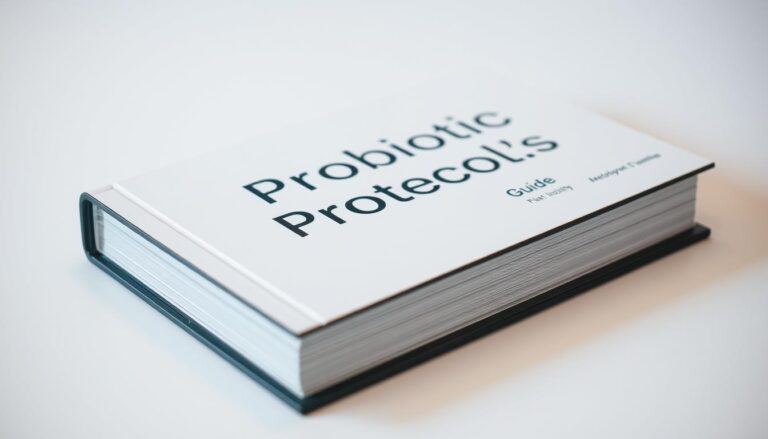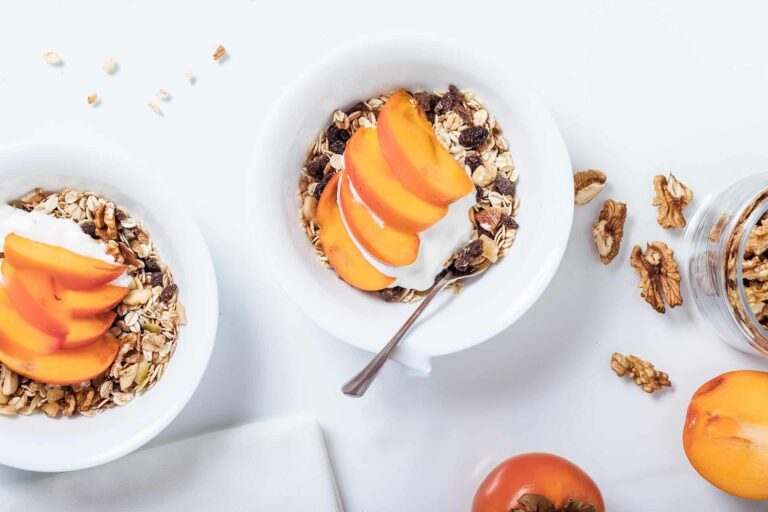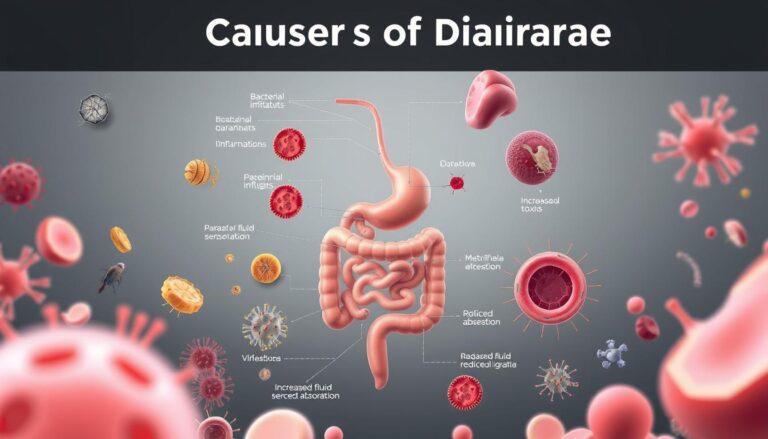Complete Guide to Elimination Diets

Your stomach churns after dinner. Your skin breaks out after breakfast. You feel exhausted despite a full night’s sleep. These daily struggles might seem normal, but what if your food choices are the hidden culprit? Many people live with mysterious symptoms for years, never realizing that simple dietary changes could transform their health.
Food sensitivity testing through elimination diets has helped millions discover the root cause of their discomfort. This proven approach removes possible trigger foods from your meals for a few weeks. Then, you bring them back one by one. By tracking your body’s reactions, you can identify which foods work against you.
Creating an elimination diet plan doesn’t mean starving yourself or missing out on delicious meals. You’ll enjoy a wide variety of nutritious foods while your body heals and resets. The temporary restrictions lead to lasting knowledge about your unique dietary needs.
Research shows that up to 20% of people experience food intolerances that affect their quality of life. Natural compounds in everyday foods or common additives can trigger reactions through various body processes. The good news is that elimination diets offer a safe, effective way to pinpoint your personal food triggers without expensive medical tests.
Key Takeaways
- Elimination diets help identify foods causing adverse reactions in your body
- The process involves removing suspect foods for 2-4 weeks, then reintroducing them systematically
- Food intolerances affect up to 20% of people worldwide
- This approach is safe when you maintain variety in your remaining food choices
- Clinical evidence supports elimination diets as one of the best tools for discovering food sensitivities
- Both natural food compounds and common additives can trigger unwanted symptoms
What Are Elimination Diets?
An elimination diet helps find out which foods might be making you sick. It’s a short-term diet that lasts 5-6 weeks. You remove certain foods and then add them back one at a time. This way, you can see which foods make you feel bad.
Definition and Purpose
The main aim of an elimination diet is to find out which foods are bad for you. You remove common problem foods first. Then, you add them back one by one and watch how your body reacts.
Common Reasons for Use
People use elimination diets for many reasons. You might need one if you have:
- Digestive issues like bloating, gas, diarrhea, or constipation
- Skin problems including eczema or unexplained rashes
- Chronic headaches or migraines affecting millions of Americans
- Persistent fatigue or brain fog
- Joint pain or inflammation
Conditions like IBS, ADHD, and eosinophilic esophagitis often get better with an elimination diet. Many people find out they have food sensitivities they didn’t know about.
How Elimination Diets Work
Understanding how an elimination diet works is key to getting the most out of it. It involves two main steps to find out which foods bother you. Each step needs your focus and patience, but learning what foods affect you is worth it.
The Process of Elimination
The first step is removing foods you think might cause problems. For 2-3 weeks, avoid foods like dairy, gluten, eggs, soy, nuts, and nightshade veggies. This lets your body get rid of any leftovers from these foods.

Pay attention to how you feel during this time. If you don’t see any changes after 4 weeks, it might not be the food. This helps you avoid unnecessary diet changes and find other possible causes with your doctor.
Reintroduction Phase
Once you’ve stopped eating certain foods, start adding them back one at a time. This step shows which foods you can handle and which ones make you feel bad. Here’s how to test each food:
- Day 1: Eat a small portion of the test food
- Day 2: Double the amount from day 1
- Day 3: Consume a larger, normal-sized portion
Use pure foods for testing. For example, test wheat with plain wheat cereal, not bread. Eggs should be tested as whites and yolks separately. Look for signs like rashes, headaches, or changes in your digestion. The whole process usually takes 5-6 weeks.
Types of Elimination Diets
Different elimination diets have different goals. They target specific foods that might cause problems. Knowing about these diets helps you pick the best one for your elimination diet for gut health journey.
The 7-Day Elimination Diet
The 7-day elimination diet is a quick fix for your gut. It removes common trouble foods like dairy, gluten, eggs, soy, and processed sugars. You’ll eat whole foods like lean proteins, veggies, and fruits during this week.
Many start here to find out which foods they’re sensitive to. After seven days, you can start adding foods back one at a time. It’s great for those with busy lives and gives quick results.

The Paleo Elimination Diet
The Paleo diet combines ancient eating with food sensitivity tests. You’ll skip grains, dairy, legumes, processed foods, and refined sugars. It focuses on grass-fed meats, wild fish, veggies, fruits, nuts, and seeds.
This diet helps heal your gut and find out which foods are bad for you. Many elimination diet recipes fit the Paleo diet, making meal planning simpler.
The FODMAP Diet
The FODMAP diet targets carbs that upset your stomach. Doctors often suggest it for IBS. You’ll avoid foods high in FODMAPs like some fruits, veggies, dairy, and sweeteners.
| High-FODMAP Foods | Low-FODMAP Alternatives |
|---|---|
| Apples | Strawberries |
| Wheat bread | Rice cakes |
| Milk | Lactose-free milk |
| Garlic | Garlic-infused oil |
Health Benefits of Elimination Diets
Elimination diets do more than help you lose weight. They help you find foods that make you sick. This can make you feel much better overall. Studies show they can improve digestion and help with chronic diseases.
Identifying Food Allergies and Intolerances
One big plus of elimination diets is finding out what foods make you sick. Many people don’t know they have food sensitivities. These can cause things like bloating and headaches.

Elimination diets for allergies help you figure out what foods upset you. They are better than tests because they show how your body reacts to food in real life.
Improving Digestive Health
Getting rid of bad foods makes your gut feel better. Studies on people with irritable bowel syndrome (IBS) show great results. In one study, 150 people with IBS felt 10% better. Those who stuck to the diet felt up to 26% better.
- Reduced bloating and gas
- Better nutrient absorption
- Regular bowel movements
- Decreased stomach pain
Aiding in Chronic Conditions
Elimination diets can help with many chronic health problems. Studies show they improve symptoms in several conditions:
| Condition | Research Findings | Symptom Improvement |
|---|---|---|
| Eosinophilic Esophagitis | 146 patients studied | 75% experienced reduced inflammation |
| Chronic Migraines | 50 patients, 2-month trial | Reduced headache frequency |
| Eczema | Multiple studies | Significant symptom reduction |
| ADHD in Children | Food-sensitive participants | Improved focus and behavior |
These diets also help with autoimmune diseases and GERD. By avoiding foods that cause inflammation, your body can heal and find balance again.
Potential Risks and Considerations
An elimination diet can help find food sensitivities. But, it’s not without risks. Eating too little for too long can harm your health. Knowing these risks helps you decide if it’s right for you.
Nutritional Deficiencies
Removing foods can leave out important nutrients. Without dairy, you might miss calcium and vitamin D. Grains are key for B vitamins and fiber.
To avoid these gaps, try these:
- Use kale and collard greens for calcium
- Get vitamin D from non-dairy milk or sunlight
- Find B vitamins in approved foods and veggies
- Always talk to a doctor before taking supplements

Psychological Impact
Strict diets can mess with your food relationship. You might feel anxious or only eat “safe” foods. This can lead to unhealthy eating habits.
Be careful if you: skip meals, feel bad after eating, or check food labels too much. Your mental health is just as important as finding food triggers.
Consulting a Healthcare Professional
See a doctor before starting an elimination diet. This is very important if you’re pregnant, breastfeeding, or have health issues. Kids need balanced diets for growth.
A doctor can help you eat right while on the diet. They watch for bad reactions and change the diet as needed.
How to Plan an Elimination Diet
Starting an elimination diet plan needs careful planning. You must track your eating habits, plan meals, and stay committed. This approach can help with health or weight loss, if done right.
Creating a Food Diary
First, write down what you eat and drink for a week. Note each meal, snack, and drink, and any symptoms. Look for patterns in your eating that might cause problems.
Sample Meal Plans
Plan your meals ahead to avoid getting stuck. Here’s a three-day meal plan to start:
| Day | Breakfast | Lunch | Dinner | Snacks |
|---|---|---|---|---|
| Day 1 | Green smoothie with spinach, banana, and coconut milk | Quinoa bowl with roasted vegetables | Grilled chicken with steamed broccoli and sweet potato | Apple slices with almond butter |
| Day 2 | Gluten-free oatmeal with berries | Large salad with olive oil dressing | Baked salmon with asparagus and brown rice | Carrot sticks with guacamole |
| Day 3 | Quinoa breakfast bowl with pumpkin seeds | Vegetable soup with bone broth | Turkey stir-fry with mixed vegetables | Rice cakes with avocado |
Tips for Success
Clear your kitchen of tempting foods and stock up on good ones. Cook meals in bulk on weekends. Have healthy snacks ready to avoid bad choices. Remember, small changes can make big health differences.
Foods to Avoid and Include
Starting an elimination diet means knowing which foods to skip and which to eat. You need to pick foods that help your body and avoid foods that might cause problems.
Common Food Triggers
Common foods to avoid include dairy, eggs, wheat, and shellfish. Also, steer clear of citrus fruits, nightshade veggies, and gluten. Sugar, chocolate, and processed meats can sneak into foods, so always check labels. Drink water and herbal teas instead of coffee, alcohol, and soda.
Healthy Substitutes
Even with an elimination diet, you can eat tasty food by making smart choices. Use coconut or rice milk instead of dairy. Try rice noodles or veggie spirals instead of wheat pasta. Most fruits are okay, but avoid citrus.
Choose lamb, turkey, wild salmon, and game meats for protein. Use olive, flaxseed, and coconut oils for cooking and dressings.
Replacements for Common Ingredients
| Avoid | Replace With |
|---|---|
| Wheat flour | Rice flour, coconut flour |
| Butter | Coconut oil, olive oil |
| Soy sauce | Coconut aminos |
| Regular pasta | Rice noodles, quinoa pasta |
| Cow’s milk | Coconut milk, rice milk |
Be careful of hidden ingredients like whey, casein, and lactose in foods and meds. Malt flavoring and modified food starch often have gluten. To follow an elimination diet, you must be a label detective and ask questions when eating out.
Success Stories and Testimonials
Many people in the U.S. have improved their health with elimination diets. They’ve tackled issues like chronic digestion and fatigue. By removing certain foods, they’ve felt much better.
Personal Experiences
Sarah from California had IBS for five years. She tried an elimination diet and felt better in three weeks. Mark from Texas lost 15 pounds by avoiding corn products.
Parents have seen big changes in their kids too. A Florida mom noticed her son’s ADHD improved after avoiding artificial additives. These stories show how effective elimination diets can be.
Expert Endorsements
Healthcare experts often suggest elimination diets. The University of Wisconsin Integrative Health says they’re the top way to find problem foods. Dietitians have seen 75% of patients with eosinophilic esophagitis get better.
Allergists at Care & Family Health in Toronto say patients often find relief after years. They’ve seen fewer migraines when food triggers are avoided. Experts agree: elimination diets are effective when done right.
FAQ About Elimination Diets
Starting an elimination diet plan raises many questions. You might wonder how long it will take and what challenges you’ll face. Here are answers to common concerns when starting your elimination diet protocol.
How Long Should I Follow an Elimination Diet?
Your elimination diet for gut health usually lasts six to eight weeks. The first part removes trigger foods for two to four weeks. Wait until your symptoms get better before moving on.
The reintroduction phase takes several more weeks. You test one food at a time. It’s not meant to be your permanent diet. Think of it as a tool to find problem foods.
Can I Eat Out While on an Elimination Diet?
Yes, you can enjoy restaurants while on your elimination diet. Check menus online before you go. Call ahead to talk to the staff about your needs.
Choose restaurants that are good for special diets like True Food Kitchen or Sweetgreen. Eating a small meal before social events helps. Bring a safe dish to share at gatherings so you know you’ll have something to eat.
What Should I Do if I Experience Side Effects?
Some discomfort is normal in the first week of your elimination diet. Call your doctor if symptoms last more than two days or get worse. Seek help right away for serious issues like unexplained weight loss, blood in stool, or severe pain.
If you accidentally eat an eliminated food, you might need to start over. Your body needs a clean slate to find trigger foods during reintroduction.






